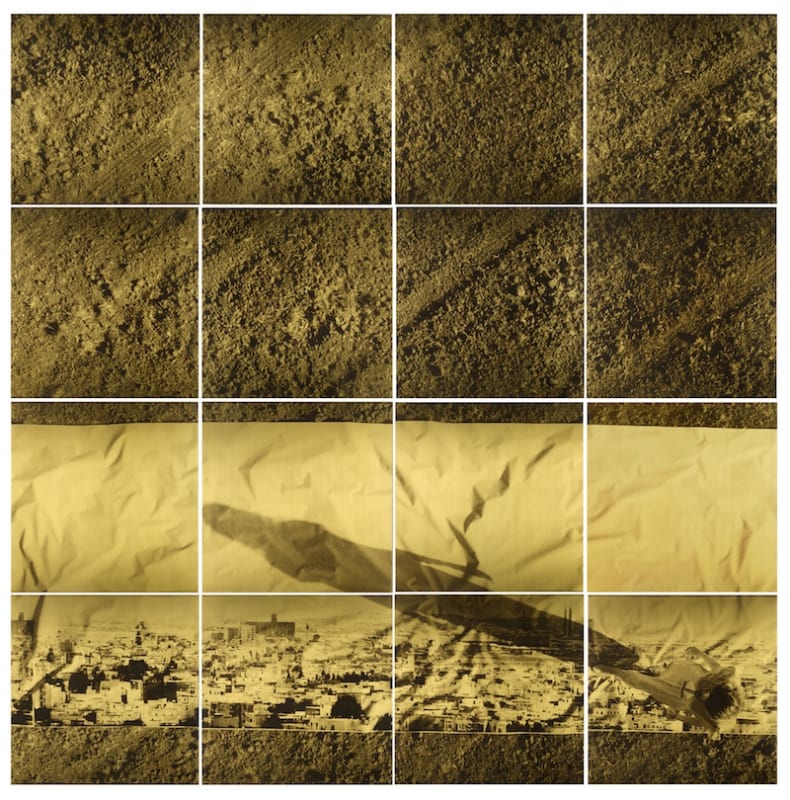Selma Feriani Gallery is pleased to invite you to Fissures, a solo exhibition by Buenos Aires-based artist Catalina Swinburn.
The delimitation of territory and the deployment of limits, landmarks, milestones, hedges or fences have always been part of the ways that individuals gathered in societies – whether large or small – adopt to produce an inside-outside situation in order to express ownership, belonging or their opposite.
In the words of Zygmunt Bauman, these physical and symbolic barriers are “a declaration of intent” meant to establish positions, define points of view, and to both include and exclude.” Thus, from a certain position, from inside we can see other places and people that are not physically included in our world, even if we have a number of symbolic and imaginary constructions and references about them.
Within certain contexts, this simple observation becomes specifically problematic. Migrations have always been part of the logic of human settlement on the planet since the beginning of time. Likewise, the setting of limits had an early start and the safekeeping of territory, property and people has been the driving force for the creation of all kinds of boundaries ever since. Such boundaries are the setting of Catalina’s works.
This somewhat coarse surface, evenly stained with black dots in some parts and scratched with careless despair in others, turns out to be enigmatic. The great crevice that goes through it horizontally creates a broken line of varying intensities. Further down, something that looks like a shadow repeats that sinuosity almost like an echo. Is it a territory? Is it a distant aerial view of a desert landscape with a dark deep canyon, a legacy of quakes or explosions?
The ambiguity, uncertainty and indefinition expressed by certain images lead the beholder to unexpected horizons and new questions.
Here/there is a binomy of polarities that alludes to the uncertainty where all her works are set. A water surface extends beyond the boundaries of the image. A white boat faintly inhabited by a figure floats adrift. This image, a melancholic evocation, becomes a threatening presence with the irruption of an abyss on that water surface.
The crevice, the leitmotif of several of these images, drastically prevails over them and places them in a new threshold, one that is fractured, disobedient or threatening at times.
The horizon is another key motif of this artist. Just like the crevice, albeit even, serene and tense at the same time, the horizon reminds us of the point of view: here or there.
“Here or there?” is a question that appears in every piece as a litany, the one that guides the slender image of a woman through territories and borders and leads the artist to inquire into those alien spaces that she makes her own by reinventing them.
Photography is one of her resources, though not the only one. She makes use of photomontage, thus upholding the tradition of this technique for the transmission of ideas. The overlapping crevices on various internal and external landscapes are used as a double reference, as a cluster of aggregated and combined meanings that give way to others.
The materials - paper, bronze and stone - are more than a mere support on which images are printed. They are part of the montage offering further elements of meaning through their light fragility, their gloss and brightness, or their rustic roughness.
Probably because Catalina sketches what she defines as “anticipated archaeology”, it is the presence and accumulation of fragments that provides meaning to the whole re-signified in each piece.
“Banished but not silent”. In the standard typography of newspapers, this phrase prevails over the image. It is another montage. The texts – fleeting and “accidental” or complex and illegible at times – are integrated into her works not necessarily to provide illegibility but rather for the opposite reason: to place us in the space of cultural distance, in the eloquent banishment imposed by such a distance.
In her work a diversity of coexistent spaces and times can be perceived, languages and cultures can be sensed, and various inhabiting manners can be imagined. These open zones - crevices where the senses, intuitions and suspicions diverge – help expand the images invented by the artist into the references of each spectator. The invention turns the real into fiction and participates in the montage of images and materials, of performatic actions, and of her own and other specific sites. Here or there? This is the question aroused by the very physical and symbolic material nature of her works.
Dr. Diana B. Wechsler

